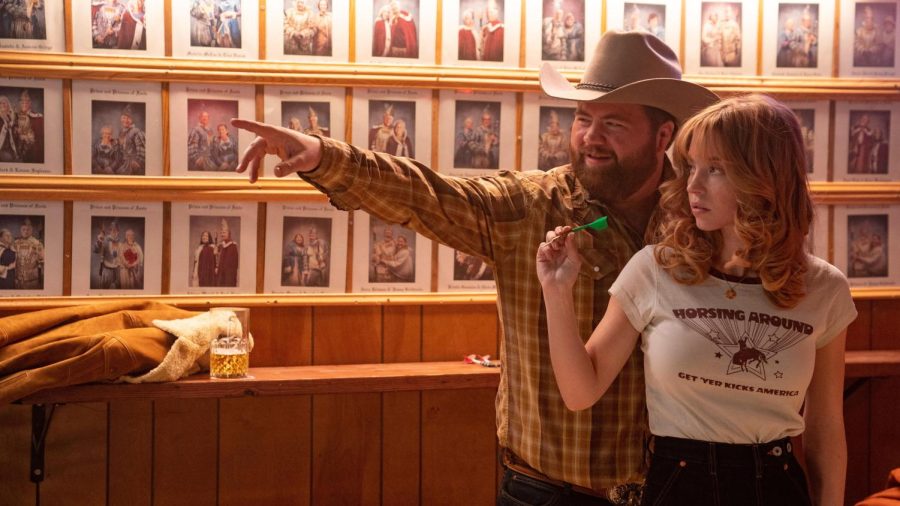Heist thriller ‘Americana’ brings modernity to Western genre
March 19, 2023
When introducing his directorial debut to the South by Southwest audience on Friday, Tony Tost said his rural upbringing and love of Western films inspired him to create a movie with a retro, drive-in feel. Despite premiering at the Paramount Theatre — the festival’s largest screen — Tost’s “Americana” captures small-town nostalgia, bringing a modern perspective to the Western genre.
Heist thriller “Americana” follows an ensemble of characters racing to find the Ghost Shirt, a famous Native American artifact, and sell it to get rich. The film, though taking place in the present, maintains an old-school feel throughout. With a gas station stick-up and a plethora of shoot-outs, the film embraces the frenzy of a classic heist flick. However, the film takes place in the present — a fact lost on viewers until the appearance of an iPhone or hybrid car jolts the movie out of the past.
The ensemble cast instills Western archetypes in modern characters. Divided into multiple acts, the film splits focus between rough-around-the-edges heroine Mandy Starr (Halsey), unlikely rancher-waitress duo Lefty (Paul Walter Hauser) and Penny Jo (Sydney Sweeney), mischievous villain Roy Lee Dean (Simon Rex) and Native American chief Ghost Eye (Zahn McClarnon).
Despite having a ‘70s- and ‘80s-inspired wardrobe and set design, as well as a vintage desaturated color palette, the story’s place in the 21st century proved to be a successful setting. While many past Westerns typically center cowboys as the heroes of their stories, “Americana” delves into the stories of women and Native American characters, diverting from classic Western tropes and commenting on cultural appropriation and gender roles. Instead of rooting for the characters to get ahold of the Ghost Shirt, the film makes a point to highlight how inappropriate and offensive their chase is, specifically in the storyline of Cal, a young white boy who believes himself to be the reincarnation of a Native American chief.
Broken up into chapters, the film introduces each character one by one, only to have them cross paths as the story unfolds. The character intersections feel seamless and smart, weaving their relationships throughout the runtime and building tension until the climactic stand-off that takes place in the final chapter. Though a large ensemble, the film seamlessly and fully executes each character’s storyline and motivations. The script points out their moral flaws and backgrounds, resulting in a complex group of characters.
“Americana” puts a modern spin on Western movies. With commentary on cultural appropriation and gender hierarchies in some rural American communities, the film acknowledges the social implications of the genre while still drawing on its aesthetics and high-speed action. Full of dust, diners and drive-by heists, the thriller marks a fantastic directorial debut from Tost.
4 flying darts out of 5



